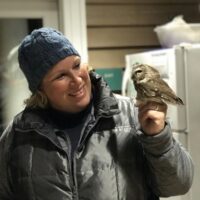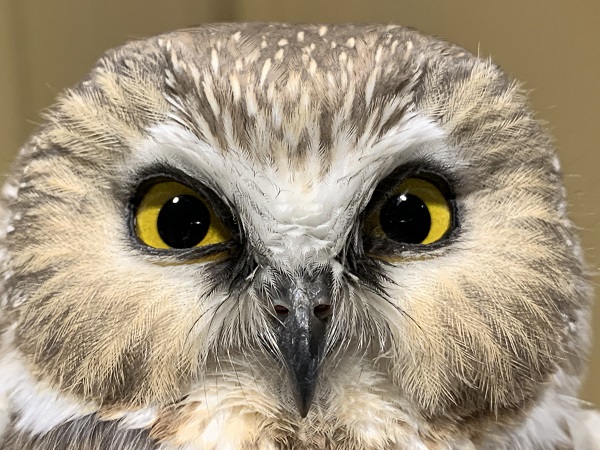Did you know that Maryland’s smallest owl, the northern saw-whet owl, weighs less than a bar of soap, yet travels thousands of miles over its lifetime? Each fall, these tiny travelers pass through Maryland during their annual migrations. Scientists are now learning much more about the northern saw-whet owl as part of Project Owlnet. Once thought to be a rare species in Maryland, we now know more about these tiny owls and their populations through years of bird banding data.
Since 2017, Melissa Boyle Acuti has run a Project Owlnet station as a volunteer at the Smithsonian Environmental Research Center in Anne Arundel County, MD, to further the research in Maryland during the fall migration season. Melissa is a naturalist with a passion for owls and is sometimes referred to as “the Owl Lady” when people can’t remember her name!
Melissa has a B.A. in Biology from St. Mary’s College of Maryland and a M.S. in Environmental Biology from Hood College. Her research with owls began in college, where she conducted an owl pellet “diet analysis” project in her ornithology class, which led to her undergraduate degree capstone project researching the Barn Owl population in St. Mary’s County in the late 1990’s. After meeting Dave Brinker at an Audubon Meeting, Melissa began her work with saw-whet owls and completed her masters thesis conducting a trend analysis on the population in Maryland. Since that time, Melissa has banded saw-whet owls almost every fall! As a visiting scientist and volunteer with the Citizen Science program, she currently oversees the Project Owlnet Saw-whet Owl Station at the Smithsonian Environmental Research Center in Edgewater, Maryland. When not studying owls, Melissa works for the Maryland Department of Natural Resources as the Chief of Interpretation for the Maryland Park Service.



